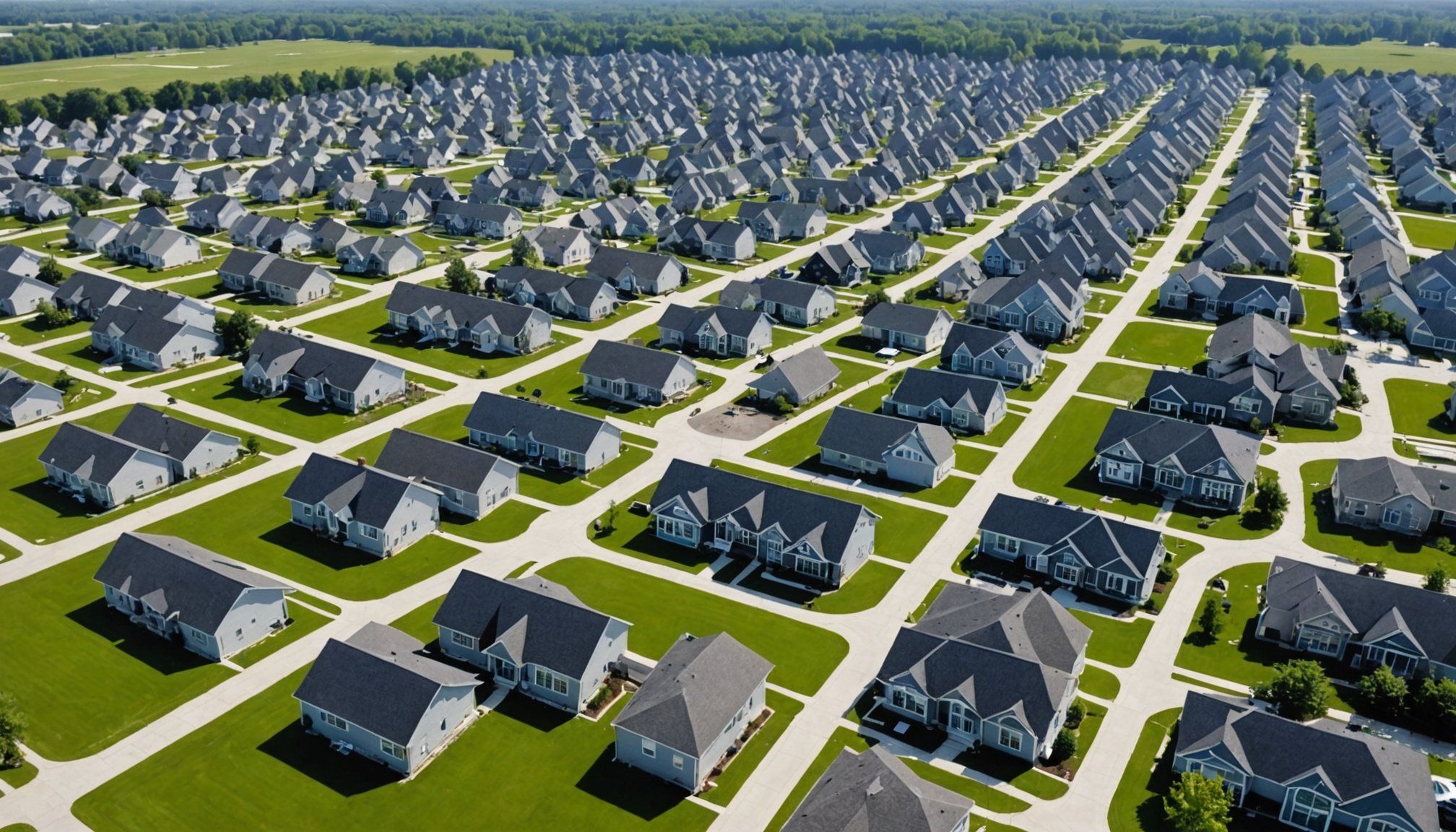Understanding Boundary Disputes
Boundary disputes often arise from disagreements over the exact property lines separating two parcels of land. They can be triggered by misinterpreted property deeds, outdated surveys, or simple misunderstandings. These disagreements are particularly prevalent in residential communities, where close living quarters can accentuate conflicting claims.
Clear property lines are crucial, especially in newly developed areas. When land is freshly divided and sold, precision in defining these lines helps avoid future disputes. If property boundaries are vague from the outset, it can lead to legal complications and neighbourly tension, an all-too-common occurrence in fast-growing residential zones.
Also to read : Exploring the Unique Challenges of Heritage Property Management in Stratford-upon-Avon
In residential communities, challenges emerge when communal amenities or shared resources straddle multiple properties, leading to disagreements over ownership and maintenance. For instance, shared driveways or fences often spark confusion regarding responsibilities and rights.
Understanding the essentials of boundary disputes helps residents navigate potential conflicts proactively. By valuing the importance of clear property delineations and being mindful of common causes of disputes, neighbourhoods can maintain amicable relations and administer shared spaces effectively. Establishing good communication and preemptively addressing potential issues can greatly reduce the likelihood of disputes escalating into legal battles.
Also to discover : Exploring the Pros and Cons of Investing in Airport-Adjacent Properties in the UK
Legal Framework Governing Boundary Disputes
An understanding of boundary dispute laws is essential for navigating property disagreements. These laws lay the groundwork for resolving such disputes, often differing across local and state jurisdictions. Local regulations typically establish the criteria for defining property boundaries and dictate the protocols for resolving conflicts. This legal framework ensures that boundary disputes are resolved consistently and fairly, providing a standardised process for all involved parties.
In newly developed residential communities, boundary dispute laws play a critical role in maintaining harmony. Developers must adhere to specific zoning laws and subdivision regulations, which aim to prevent disputes by ensuring clear and precise property lines from the outset. Any ambiguity in these legal delineations can lead to protracted legal challenges among property owners.
Key terminology in property law includes terms such as “easement” and “adverse possession,” which refer to the right to use someone else’s land for a specific purpose and acquiring title to land based on continued possession, respectively. Understanding these terms can provide clarity and insight into potential resolutions for boundary issues. For homeowners, familiarity with these legal concepts and engaging with local legal frameworks can grant greater confidence in dispute resolutions, promoting informed decision-making.
Steps to Resolve Boundary Disputes
Boundary disputes can be contentious, but effective dispute resolution strategies can lead to amicable solutions.
Initial Steps
The first step in resolving a boundary dispute is to gather clear evidence and documentation related to the property lines. This includes property deeds, surveys, and any other relevant documents. Engaging in open communication with neighbouring property owners is crucial. A simple conversation might help clarify misunderstandings. If an informal resolution isn’t reached, consider mediation. Mediation allows both parties to discuss their issues with a neutral third party, promoting understanding and potentially avoiding costly litigation.
Formal Dispute Resolution
Should informal methods prove ineffective, understanding the formal legal procedures becomes necessary. Mediation provides a platform to negotiate without going to court. If mediation is unsuccessful, filing a formal complaint is the next step. During this process, knowing your legal rights is vital. Legal counsel can offer guidance on procedures and expectations.
Going to Court
Litigation emerges as the last resort when other methods fail. The litigation process involves presenting evidence, appealing to legal statutes, and often, expert witness testimony. The outcome hinges on judicial interpretation, and the enforcement of court decisions ensures compliance. Being informed enhances preparedness and confidence during proceedings.
Common Scenarios Leading to Disputes
Boundary disputes often arise from misunderstandings over property lines and shared resources. Common boundary issues typically manifest in scenarios involving fences, trees, and easements. For instance, disputes might occur when a neighbour plants a tree near the border, and its roots or branches extend into another property, potentially causing damage. Similarly, erecting a fence without consulting the concerned parties may lead to confusion about the exact property lines, creating friction amongst neighbours.
Easements, which grant the right to use another person’s land for a specific purpose, also commonly trigger disputes. These situations often stem from one party misunderstanding the terms or scope of the easement, leading to disagreements over access or usage rights. Such disputes can grow more complex in residential communities, where several homeowners may be affected.
Case studies illustrate that resolution often comes through mediation or legal intervention, establishing the importance of resolving disputes amicably and proactively. By learning from past conflicts, property owners can understand the value of communication and legal awareness, which are key in maintaining harmony within neighbourhoods. These examples underline the necessity of clear legal frameworks to address and prevent boundary issues effectively.
Common Scenarios Leading to Disputes
Boundary disputes can emerge from common boundary issues, often involving tangible elements like fences, trees, and easements. Misunderstandings frequently arise when, for instance, a neighbour plants a tree near the property line, leading to roots or branches encroaching onto another property. Such encroachments can damage property and spark disputes. Similarly, erecting a fence without mutual agreement can lead to conflicts over the precise location of property lines.
Easements, granting the right to use someone else’s land for a specific purpose, often become contentious. Disputes usually arise from confusing terms or overstepping the allowed scope. In residential communities, these scenarios can multiply, affecting several property owners and leading to complex disputes.
Studying case studies reveals that resolution often involves mediation or legal intervention. Successful resolutions emphasize the importance of proactive communication and a robust understanding of boundaries and rights. Past lessons show that having clearly defined legal frameworks is crucial for avoiding misunderstandings and ensuring smooth resolution processes. By learning from these examples, property owners can better navigate disputes and maintain harmony within their neighbourhoods.
Tips for Avoiding Litigation
Disputes over boundary lines can escalate quickly, but several practices can help property owners avoid litigation. First and foremost, establishing clear property boundaries before any purchase or development is crucial. Engaging a professional land surveyor ensures that the property lines are accurately defined and documented, reducing the chances of future disagreements.
Continuous and open communication with neighbours is another effective strategy. Many disputes stem from simple misunderstandings that could be resolved through a calm discussion. By maintaining a rapport with neighbouring property owners, potential conflicts can be nipped in the bud before they require legal interventions.
Beyond communication, dispute prevention is further supported by involving homeowner associations. These groups often have resources, rules, and guidelines designed to manage and mitigate property disputes within residential communities. They can offer neutral advice or mediate disputes to prevent them from reaching the courtroom.
It’s also wise to stay informed about relevant property laws and local regulations. Knowing your rights and responsibilities as a property owner goes a long way in fostering peaceful coexistence. Taking these best practices into account can save time, stress, and money in the long run.
Local Resources and Support
For those navigating boundary disputes within residential communities, numerous local resources and homeowner associations offer valuable assistance. These organizations often act as first points of contact, providing guidelines for property maintenance and resolution of boundary disputes. Collaborating with them can help homeowners understand boundary disputes in depth and find amicable solutions.
Moreover, zoning boards are instrumental in ensuring compliance with local regulations. They provide clarity on property line specifics, crucial for avoiding disputes. Should more complex issues arise, they can direct homeowners to suitable legal assistance.
Engaging legal aid services that specialize in property disputes can significantly simplify the process. Such services furnish in-depth guidance and representation if the dispute progresses to legal proceedings. They can assist in interpreting land surveys, property laws, and rights under dispute scenarios.
Aside from legal avenues, community workshops and educational resources play a pivotal role. They empower homeowners with knowledge about boundary rights, dispute prevention, and resolution techniques. Such initiatives encourage proactive communication, equip community members with best practices, and enhance understanding of property-related challenges, leading to harmonious living environments.











